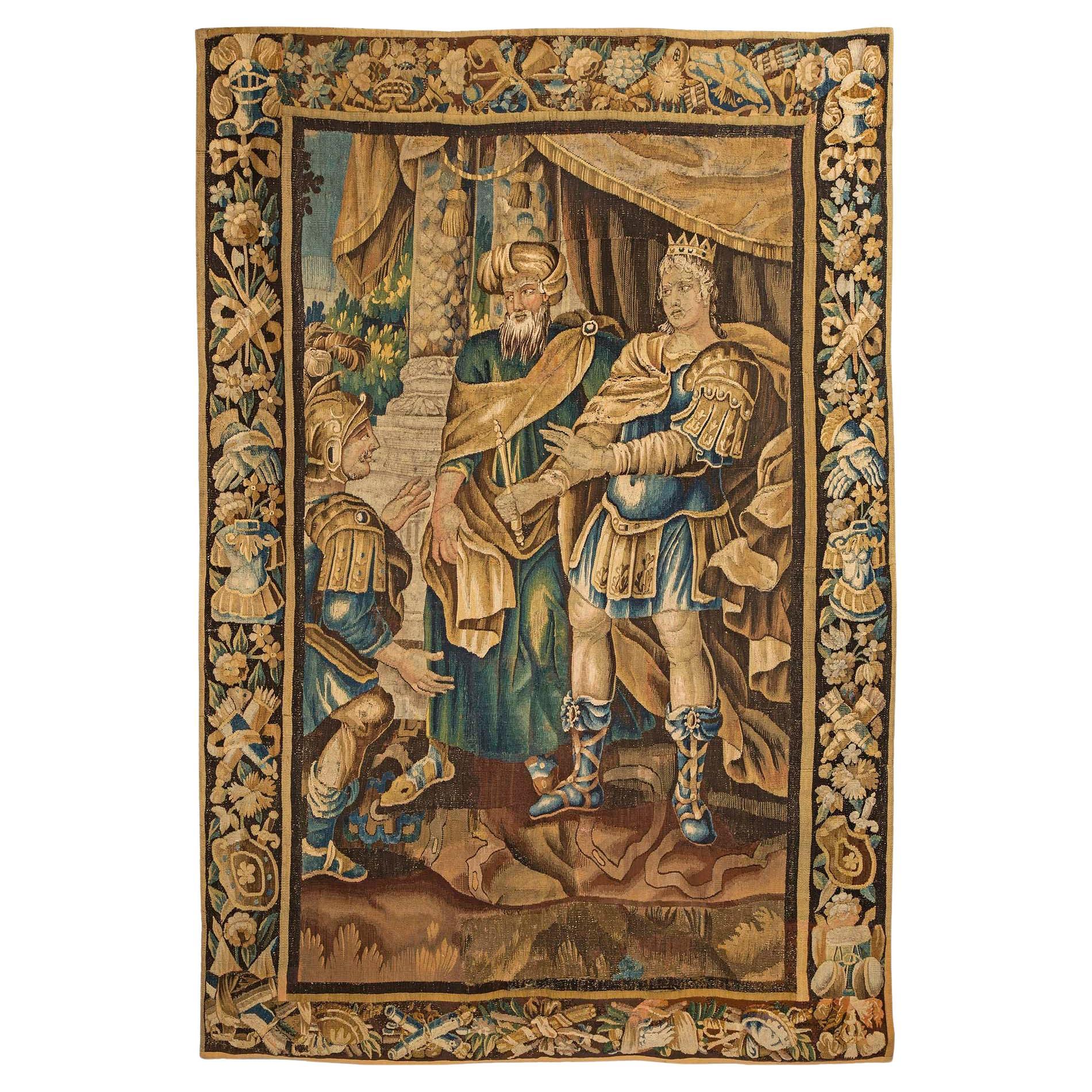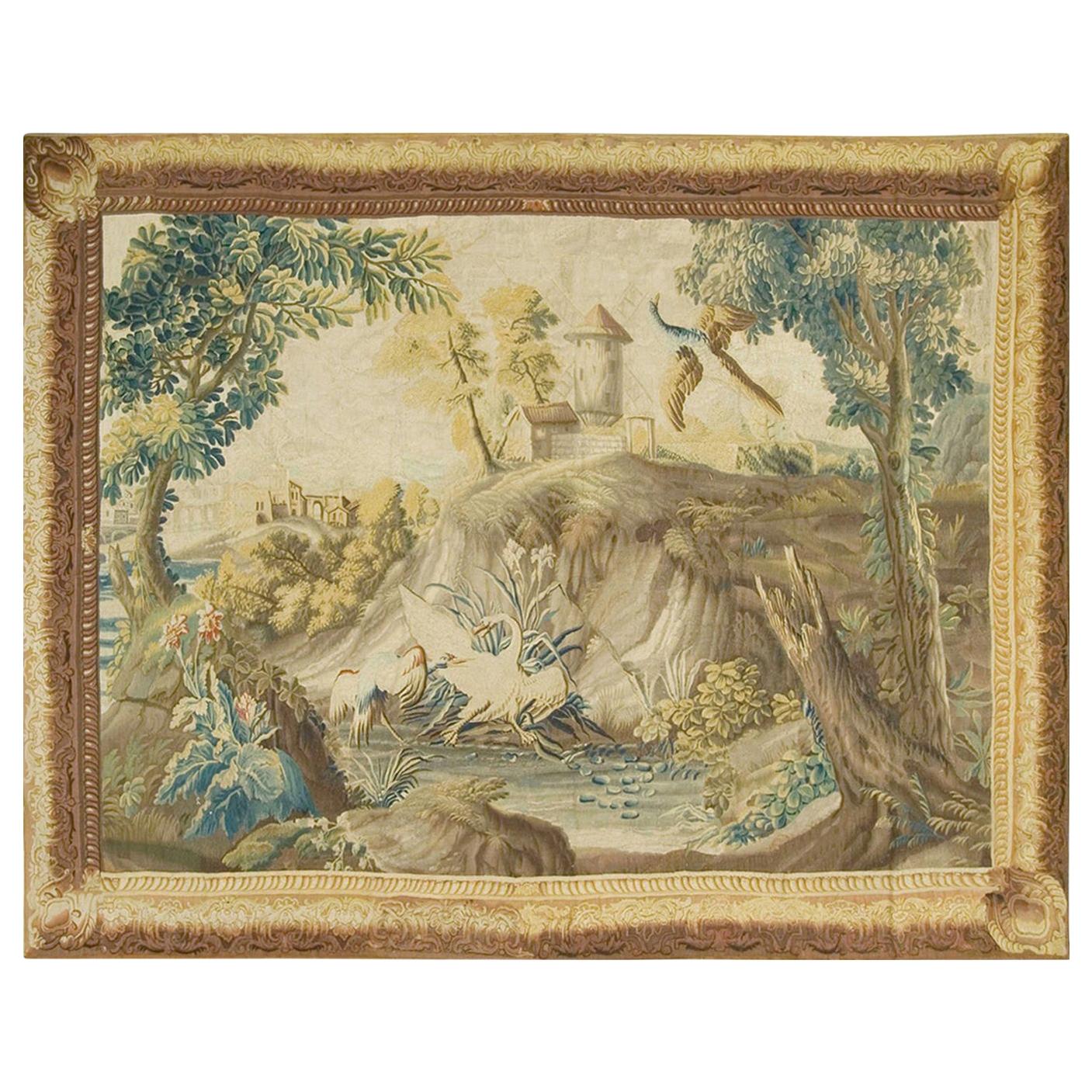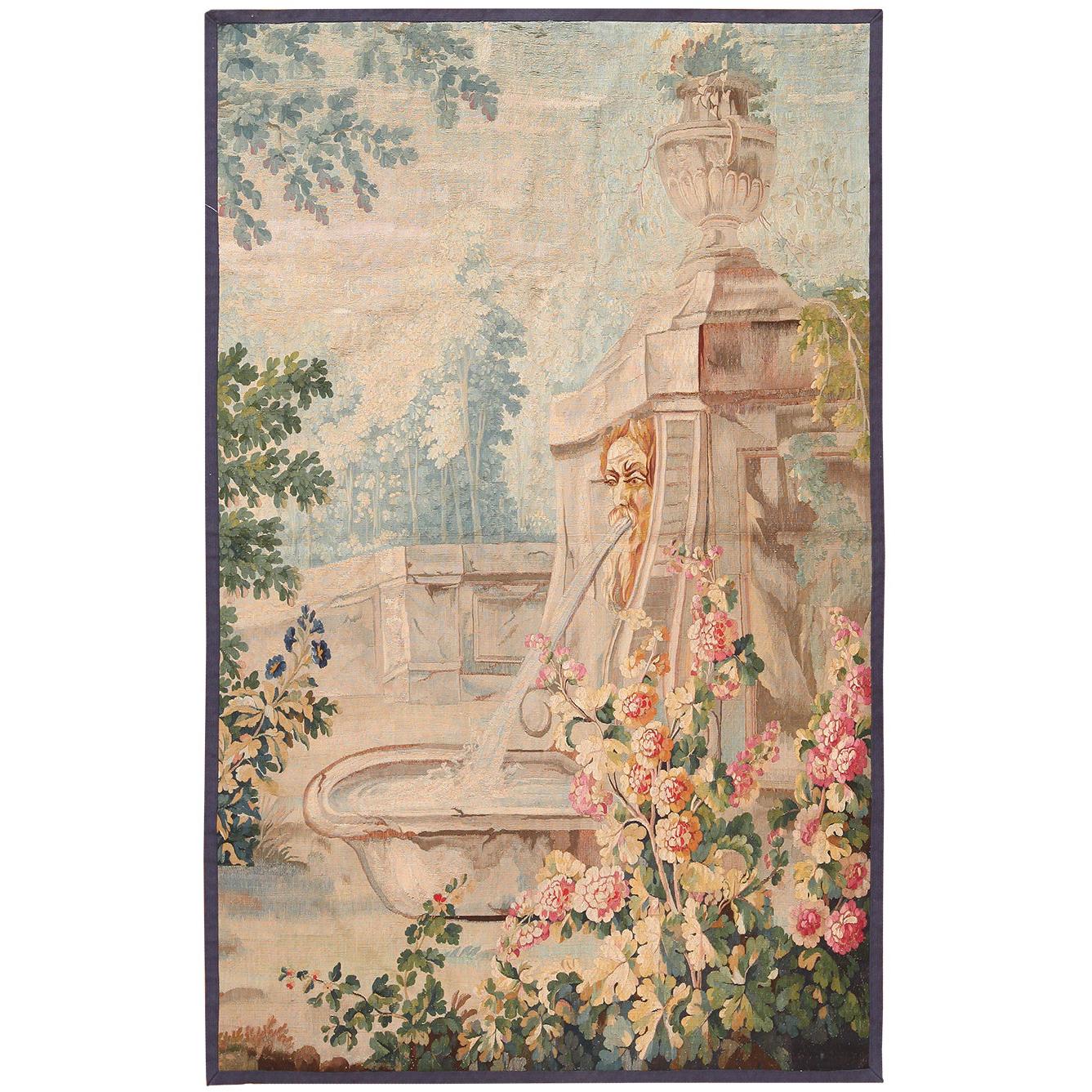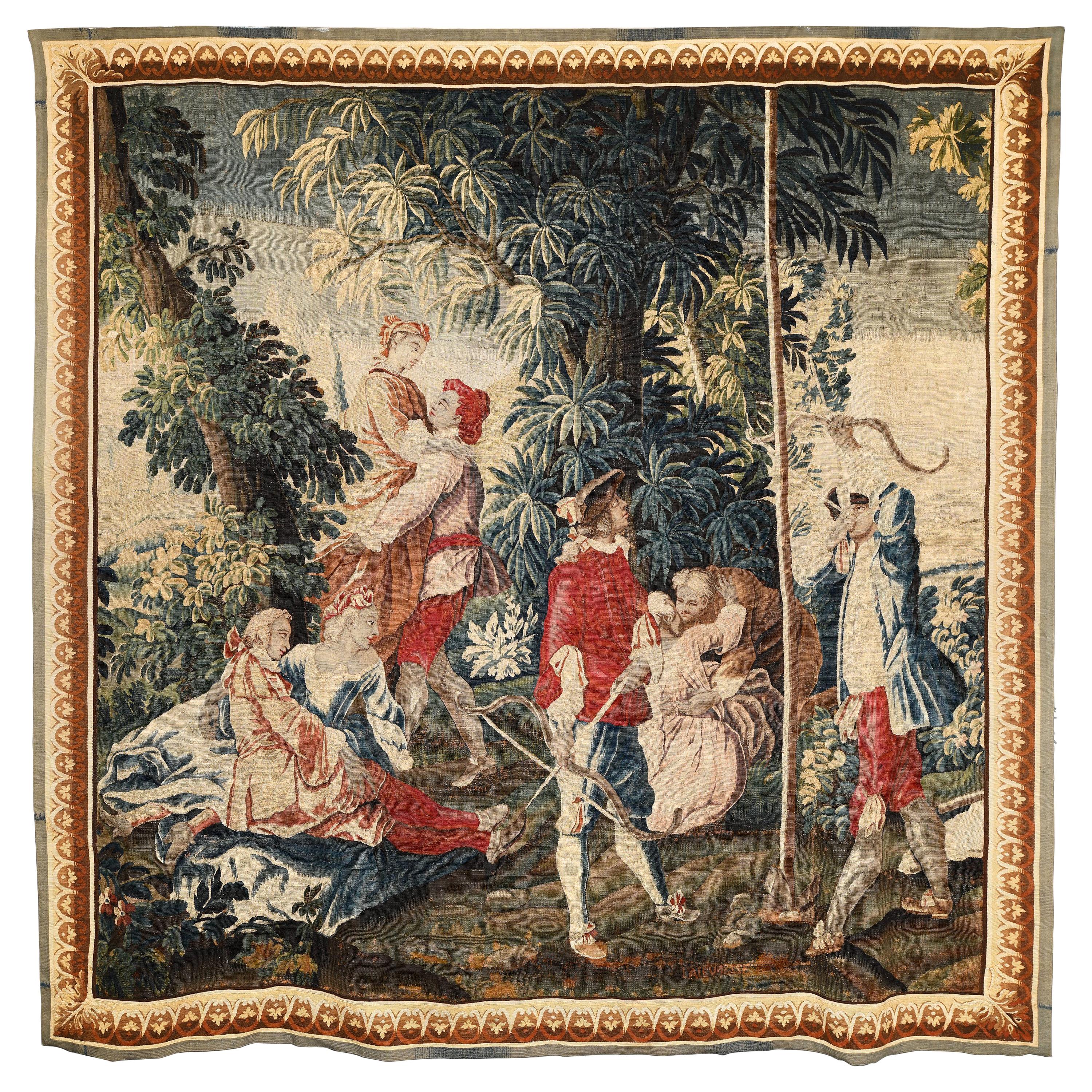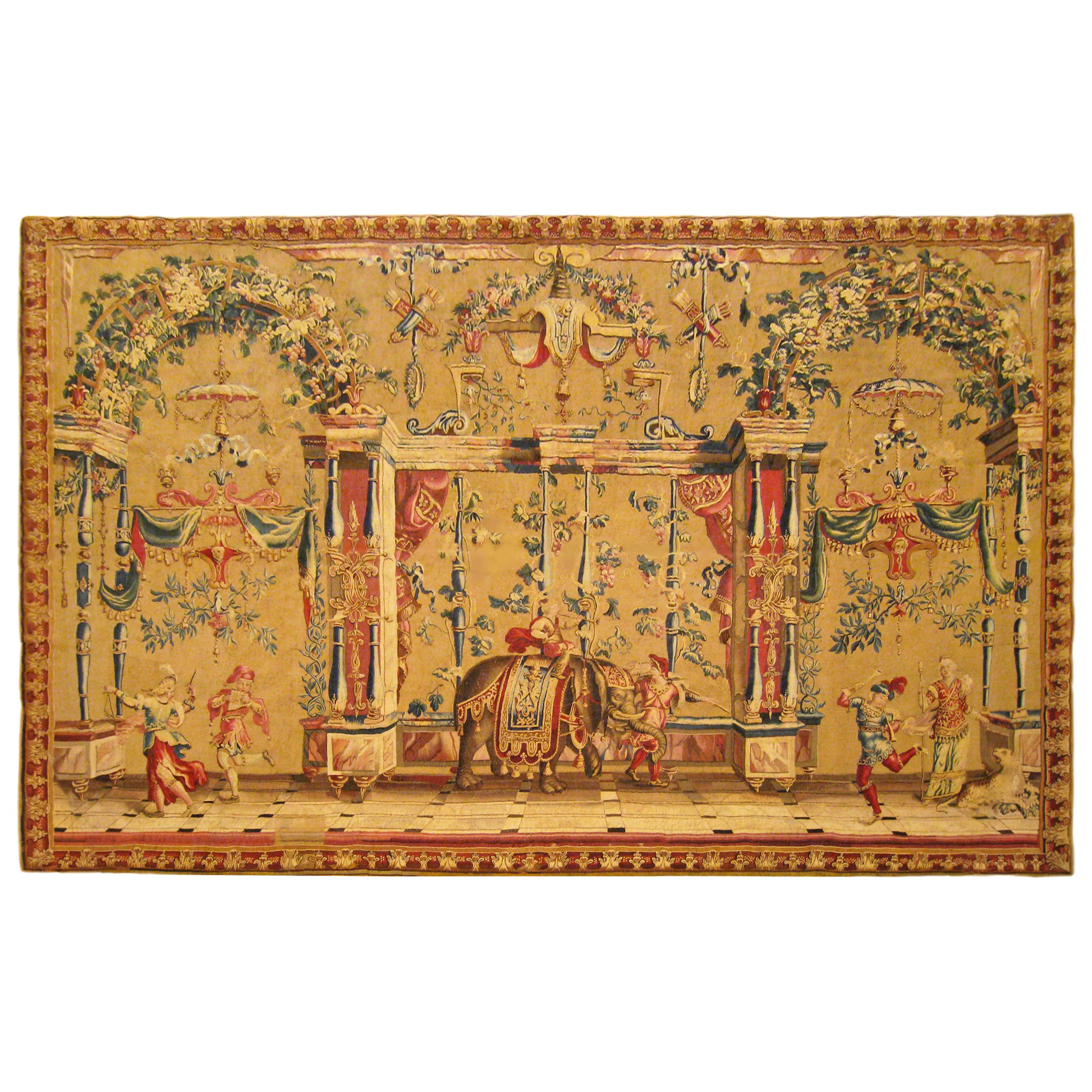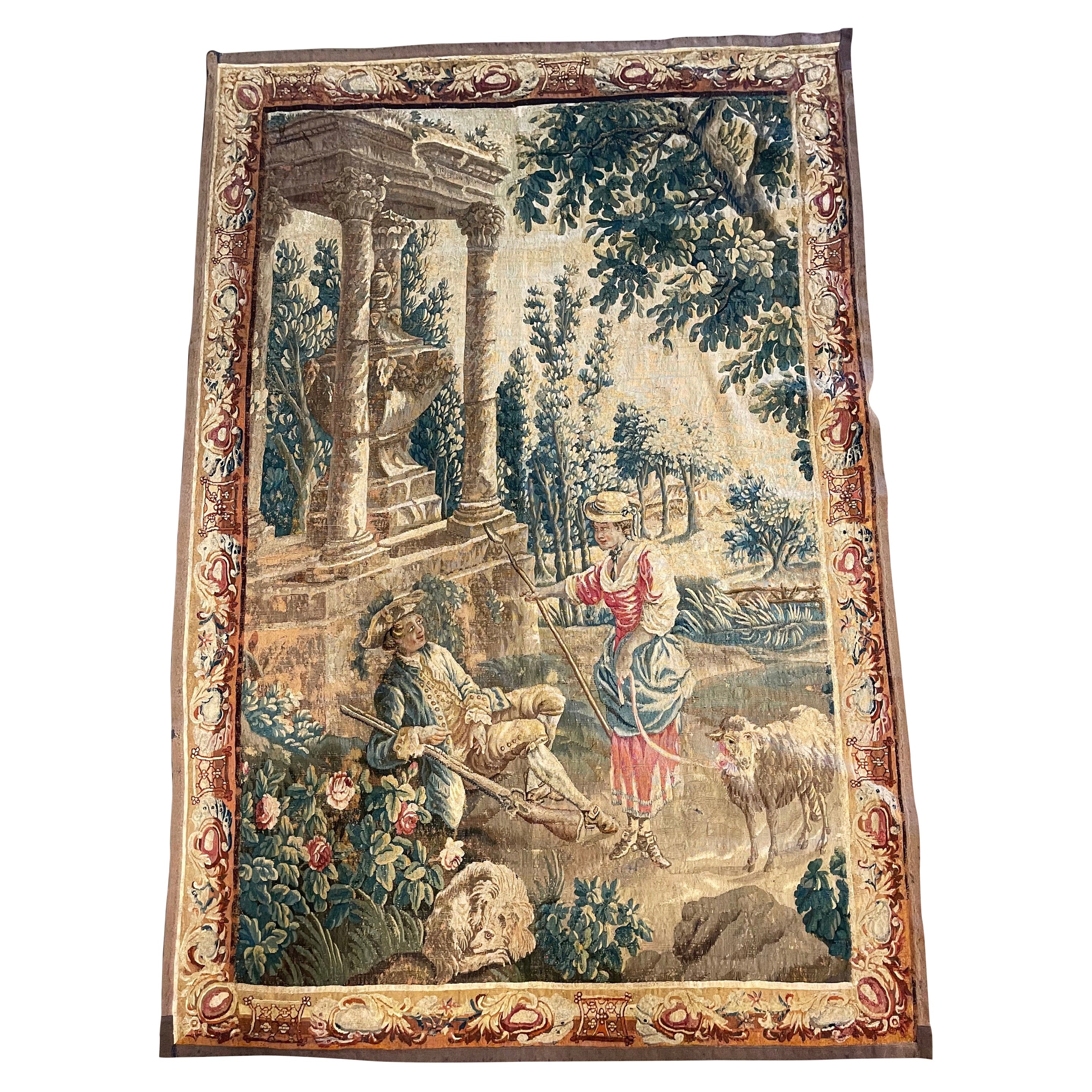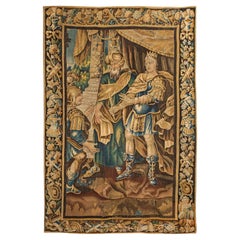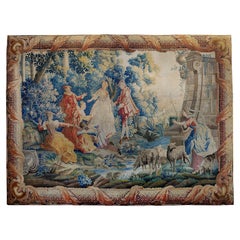
French 18th Century Beauvais Tapestry after Jean Baptiste Oudray, circa 1750
View Similar Items
1 of 11
French 18th Century Beauvais Tapestry after Jean Baptiste Oudray, circa 1750
About the Item
- Dimensions:Height: 120 in (304.8 cm)Width: 156 in (396.24 cm)Depth: 0.3 in (7.62 mm)
- Style:Louis XV (Of the Period)
- Materials and Techniques:
- Place of Origin:
- Period:1750-1759
- Date of Manufacture:circa 1750
- Condition:Wear consistent with age and use. Minor losses. Minor fading.
- Seller Location:Tetbury, GB
- Reference Number:1stDibs: LU1442215260121
You May Also Like
- French 18th Century Aubusson Tapestry, Circa 1750Located in West Palm Beach, FLA large scale and very high quality French 18th century Aubusson tapestry likely depicting Alexander the Great, circa 1750. The ...Category
Antique 18th Century French Tapestries
MaterialsTapestry
- French Landscape Tapestry Probably Beauvais, circa 1750 7'3 x 9'3Located in New York, NYFrench landscape tapestry probably Beauvais, circa 1750. Although not a product of the Royal Gobelins factory in Paris, this pictorial landscape tapestry is extremely Fine with silk highlights. The French royal tapestry works in the Gobelins made masterpieces for the crown. For the nobility and bourgeoisie, Beauvais was the source for attractive wall hangings in all sizes, degrees of fineness and subject matters. Rural scenes particularly appealed to urban collectors. Here two white geese cavort under a sandy bluff. The hillock is framed on each side by trees, one a blasted trunk, and topped by a picturesque rustic windmill. Realistically depicted flowers, overhanging grasses and luxuriant foliage give a summer air to the image. In addition, a startled bird, flies up to the right. The border is a trompe l’oeil gilt picture frame with corner bosses and low relief “carving”. The weave is quite Fine and is executed in wool with copious silk details. Although Jean Pillement...Category
Antique 18th Century French Tapestries
MaterialsWool
- 18th Century Antique French Beauvais Tapestry. 4 ft 4 in x 6 ft 9 inLocated in New York, NYBreathtaking 18th Century Antique French Beauvais Tapestry, Country of Origin: France, Circa Date: 18th Century - Size: 4 ft 4 in x 6 ft 9 in (1.32 m x 2.06 m).Category
Antique 18th Century French Baroque Western European Rugs
MaterialsWool
- Beauvais Tapestry - The Tam-tam Player - 18th Century - N° 882Located in Paris, FRExceptional tapestry from the 18th century Royal Manufacture of Beauvais. Representation of a woman wearing a crown of wheat around her head and playing the Tam-tam in the garden of ...Category
Antique 1780s French Aubusson Tapestries
MaterialsWool
- Pair of 18th Century French Beauvais Tapestries ( 2'9" x 7'6" - 83 x 228 )Located in New York, NYPair of 18th Century French Beauvais Tapestries 2'9" x 7'6" - 83 x 228Category
Antique 1750s French Western European Rugs
MaterialsSilk
- 18th Century French Wool and Silk Aubusson Tapestry and Engraving, circa 1750By Aubusson ManufactureLocated in Milano, ITLa Jeunesse (Youth) Tapestry Polychrome wool and silk France, Aubusson, circa 1750 It measures 107.08 in height x 104.33 in (272 cm height x 265 cm). State of conservation: good The tapestry is accompanied by the engraving from which the subject was taken. The engraving measures 23.50 in x 25.86 in (59.7 cm x 65.7 cm) with the frame. The Aubusson tapestry has controversial origins: some believe that it was the Saracens who imported this type of work into Europe while other authors believe that the production began at the same time as the marriage between Louis I of Bourbon and Maria de Hainaut in 1310. It was at this time that a considerable importation of tapestries from Flanders into France began, followed shortly thereafter by the importation of their production techniques. At the beginning of the seventeenth century a royal edict from Henry IV halted the importation of Flemish tapestries, contributing to the subsequent Expansion of Aubusson production. The status of royal manufacture was to be granted only in 1665, even though the Nantes edict caused a drop in production because of the forced migration of weavers to Germany. The full recovery and the success of the manufacturing took place during the eighteenth century when the great painters and the tapestry manufacturers began to collaborate. Great French artists of the time and specialist painters, the “cartonniers”, painted “cartons de tapisserie” in oil or tempera, all of which were to be a source for the tapestries. As an alternative to the “cartons”, scenes taken from prints and engravings were freely used. The tapestry in question, made of wool and silk, is in good condition; the colors are still fresh and the silks, which give brightness to the scene, are well preserved. There are a small number of integrative restorations present, while the lining and the suspension system have been recently refurbished. The work is made with a flat-weave, according to the custom of the Aubusson manufactures, which is clearly demonstrated by this work since it shows all the technical and material characteristics typical of the first half of the eighteenth-century production: the “Jeunesse” was probably woven in the middle of the XVIII century. The scene itself is compelling: a rural clearing is depicted, centered around a tall tree with dense fronds with lance-shaped leaves. In the shade of this tree some scenes of courtship can be seen. A couple hugs each other, one is caught stealing a kiss and another, lying softly on the grass, is still at the early stages of courtship: together with the suitor the girl looks with smiling malice at the kissing couple. On the right, two young men practice archery while aiming at a target placed on top of a pole. The scene, with male and female characters intent on games and gallantry in a festive atmosphere, is taken - faithfully, but in mirror-image - from an engraving, which in turn was itself taken from the painting (now kept at the National Gallery in London, inv. NG103 and part of a series with the four ages of man) by Nicolas Lancret, produced around 1735. The tapestry is accompanied by a copy of the engraving, which bears, at the bottom, the name of the author (“N. Lancret pinxit”), the name of the engraver (“N. De Larmessin sculpsit”) and four short verses on the subject of love disputes: Pourquoi tous ces combats si chers a la jeunesse, Quels frivoles talents veut-elle mettre au jour? Non: chacun voudroit vaincre aux yeux de sa Maitresse, La Lice est une Scène ou triomphe l’Amour. Why all these fights so dear to youth, What frivolous talents does it want to bring to light? No: everyone would want to win in the eyes of his Mistress, The Lice is a Scene where Love triumphs. At the bottom we read: “A’ Paris chez N. De Larmessin graveur du Roy Rue de Noyer à la 4 (?) porte cochère a droite entrant par la Rue St. Jacques A.P.D.R. [Avec Privilège Du Roy]”. Nicolas Lancret (1690-1743), along with Antoine Watteau, was a pupil of Pierre Durin and Claude Gillot...Category
Antique Mid-18th Century French Rococo Tapestries
MaterialsTapestry, Wool, Silk
Recently Viewed
View AllMore Ways To Browse
Neutral Tapestry
Beauvais Tapestry
Antique Tapestry Pictures
Louis Xv Beauvais Tapestry
French Aubusson Tapestry 19th
19th Century French Aubusson Tapestry
Vintage Tapestry Art
Wall Tapestry Landscape
Wall Tapestry Panel
Framed Silk Embroidered
French Mid Century Wall Tapestry
Antique Wall Textiles
Handwoven Wall Tapestry
Handwoven Wall Tapestries
Green Wall Textile
Signed Wool Tapestry
French Midcentury Wall Tapestry
Silk Embroidery Frame
